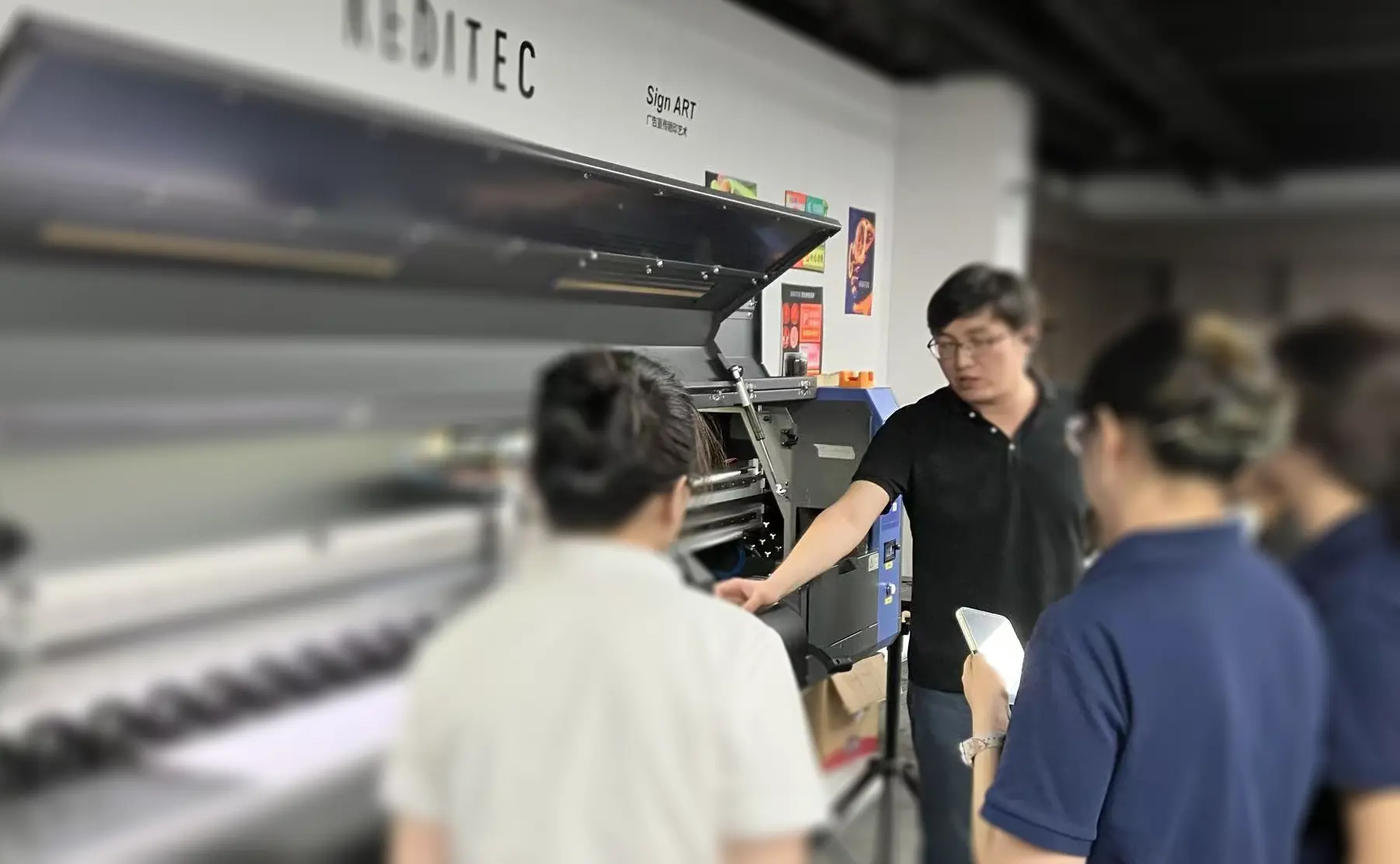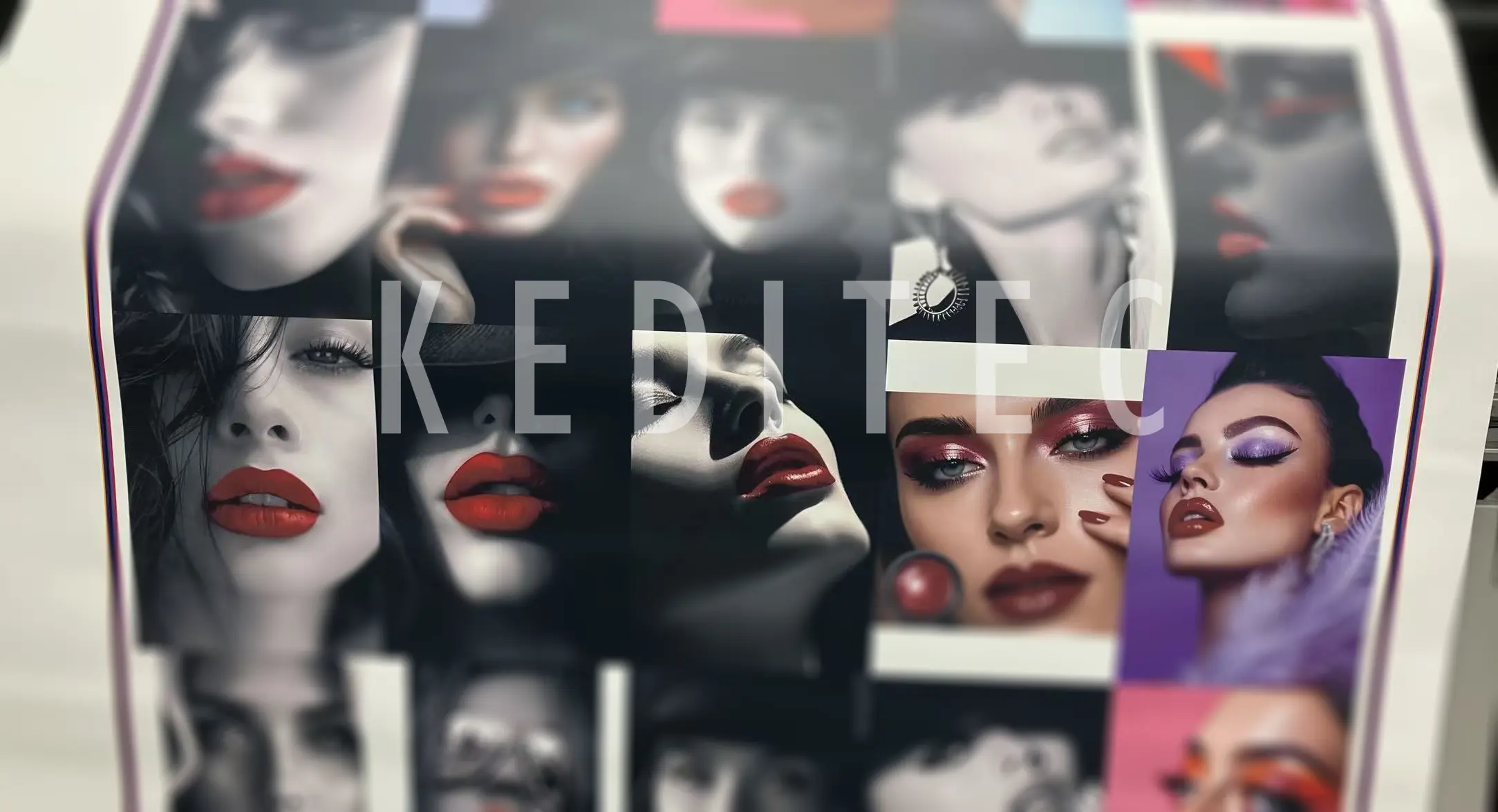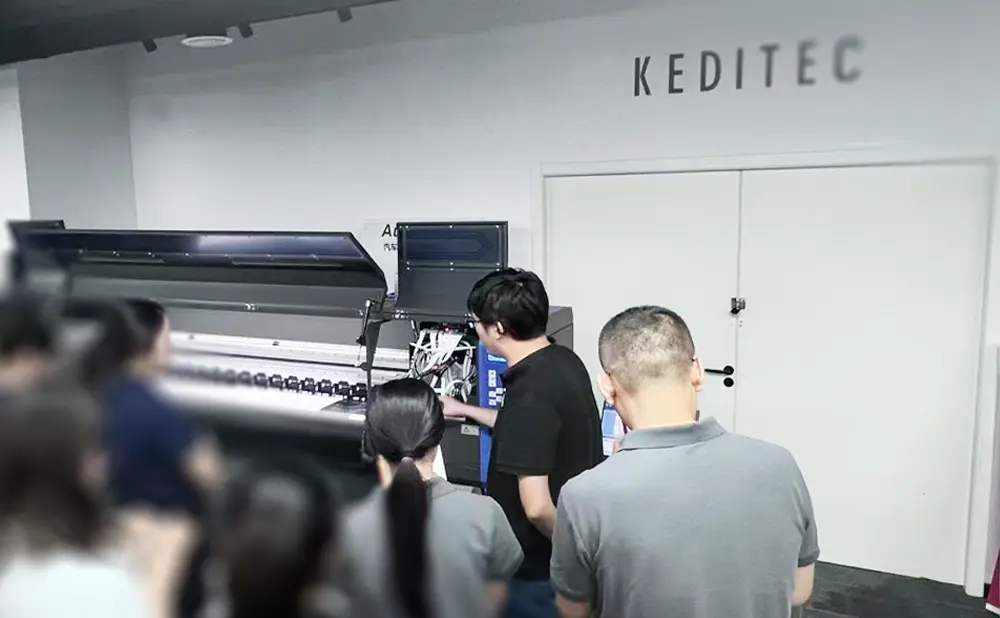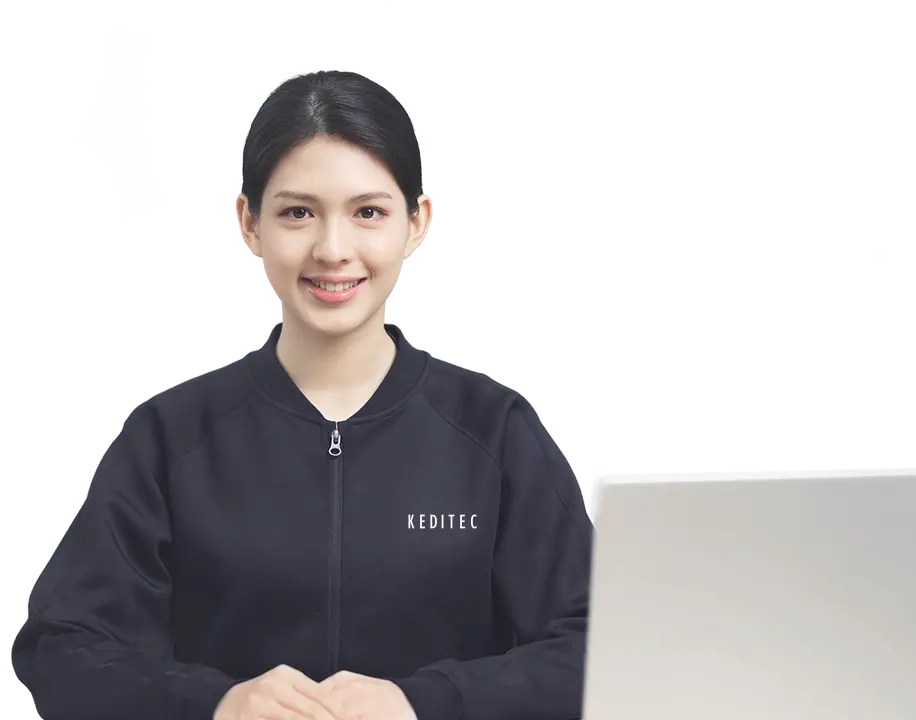
Against the backdrop of accelerating technological iteration in the advertising printing industry, the professionalism of equipment operation and technical cognition has become a crucial component of an enterprise’s core competitiveness. To effectively improve internal employees’ mastery of core equipment and consolidate the foundation of technical services, Keditec recently meticulously organized a highly targeted special internal training on UV printers. This training lasted for 1 hour, focusing on the core technical points of medium and large-sized UV printers, and attracted active participation from employees in production, technology, sales and other departments. The on-site learning atmosphere was strong, and the interactive communication was enthusiastic. Ultimately, it achieved training results exceeding expectations, further strengthening employees’ technical understanding of keditec uv printer.
Before the official start of the training, the organizers had already arranged structural diagrams of the 1.8-meter format keditec uv printer, color output samples and display boards of core components in the venue in advance. This allowed trainees to have an intuitive contact with the core content of the training at the beginning of the course and quickly enter the learning state. With the core view that “technical principles are the premise of precise operation”, the lecturer first conducted an in-depth explanation of the working principle of the medium and large-sized keditec uv printer. Combining the physical disassembly diagram of the equipment and dynamic operation videos, he started from the molecular structure characteristics of UV ink and elaborated on the core working process of the keditec uv printer: the equipment controls the nozzle module through a high-precision drive system, and sprays different types of UV ink onto the surface of various substrates such as glass, metal and acrylic according to the preset pattern. Immediately afterwards, the UV lamp group behind the nozzle emits ultraviolet rays of a specific wavelength, prompting the photoinitiator in the ink to quickly undergo a polymerization reaction. This enables the ink to complete curing and drying within 0.1 seconds, forming a printing layer with strong adhesion and wear resistance. This easy-to-understand explanation method transformed the originally abstract technical principles into a concrete process presentation, helping trainees establish a clear and profound understanding of the operation logic of the keditec uv printer and laying a solid theoretical foundation for the subsequent learning of practical operation-related knowledge.
For the 1.8-meter format keditec uv printer, which is frequently used in daily work, the lecturer conducted a key dismantling explanation, focusing particularly on its two core modules: the four-nozzle layout design and the color management system. Through the 3D model of the nozzle layout displayed on site, the lecturer clearly pointed out that the four nozzles of the equipment adopt a “symmetrical staggered arrangement” design. Among them, two nozzles are responsible for the precise spraying of basic colors and extended colors, one nozzle specially handles the output of white ink, and the last one undertakes the varnish coating work. This layout can not only increase the printing speed by more than 30%, but also ensure that the printing accuracy of every inch of the format is controlled within 0.01 mm through the collaborative calibration between the nozzles. In the color management session, combining the comparison of multiple sets of printed samples, the lecturer in-depth interpreted the unique CMYK+RGBO+white ink+varnish combination system of the keditec uv printer: the four CMYK colors serve as the basic color framework to ensure the color reproduction of conventional patterns; the addition of three RGBO colors greatly expands the color gamut range, making the presentation of high-saturation colors such as red, green and blue more bright and realistic; white ink can not only be used as a base color to improve the color expression on dark substrates, but also achieve independent white printing effects; while the coating of varnish can add special textures such as matte, glossy or partial UV to the printed products, and at the same time enhance the waterproof and scratch-resistant performance of the printed products. This multi-dimensional color and material combination scheme is precisely the key for the keditec uv printer to maintain its competitiveness in the advertising printing field.
In the section of practical operation specifications and equipment maintenance common sense, combining years of front-line practical experience, the lecturer emphasized the matching points of the varnish system of the keditec uv printer. He particularly pointed out that different types of varnishes (such as matte varnish, glossy varnish, wear-resistant varnish) correspond to UV lamps of specific wavelengths, and the two must be accurately matched to achieve the best curing effect. If the type of varnish is changed or the relevant printing configuration is adjusted due to business needs, it is imperative to replace the supporting water tank and UV lamp group simultaneously. This is because different varnishes have differences in viscosity and curing requirements. Mismatching will not only lead to incomplete curing of the varnish, bubbles or scratches on the surface of the printed product, but may also cause equipment failures such as nozzle clogging and lamp group overload. To help trainees remember this common sense, the lecturer also shared cases of equipment problems caused by irregular configuration replacement and the solutions in the past, transforming the abstract specification requirements into specific practical warnings.
Throughout the training process, trainees always maintained a high degree of learning initiative and actively raised questions about the technical details of the keditec uv printer. “Will the material differences of different substrates affect the curing speed of UV ink? How to adjust the lamp group parameters?” “How to switch between CMYK and RGBO color systems in actual printing to ensure color consistency?” “When the varnish curing effect is not good, what other components need to be checked besides the lamp group?”… Facing these questions from practical scenarios, the lecturer gave detailed answers one by one based on his own experience and the equipment technical manual, not only providing specific operation methods, but also sharing skills for quickly troubleshooting problems. For example, regarding the problem of “poor varnish curing”, the lecturer pointed out that in addition to checking the matching between the lamp group and the varnish, it is also necessary to pay attention to factors such as ambient temperature and the distance between the nozzle and the substrate, and demonstrated on site how to adjust the relevant parameters through the equipment operation panel. This “problem-oriented + case analysis” teaching mode effectively solved the knowledge blind spots of the trainees and made the training content more practical.
The successful holding of this special internal training on keditec uv printer not only enabled trainees to systematically master the working principle of medium and large-sized UV printers, the four-nozzle layout and color management logic of 1.8-meter format equipment, multi-material combination printing technology and equipment configuration matching common sense, but also allowed everyone to deeply appreciate the advancement of the keditec uv printer in the advertising printing field——its efficient curing speed can greatly improve production efficiency, the wide color gamut performance can meet various creative design needs, and the multi-substrate adaptation capability breaks the material limitations of traditional printing, providing strong support for the mass production of high-end advertising printed products.

In the future, Keditec will continue to focus on improving employees’ professional capabilities, carry out such special training regularly in combination with the needs of industry technological development and product iteration, and constantly deepen employees’ technical cognition and practical operation capabilities of core equipment such as the keditec uv printer. With more professional team quality, it will empower business development and provide customers with better printing solutions and technical services.

